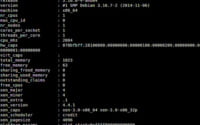What does “Time to Live Exceeded” mean? TTL Explained

As a network administrator, I occasionally hear the question, “What does it mean when I get an error message that says “Time to Live exceeded”?” People often ask this question when they are having connectivity problems. This error message may appear while using the ping or traceroute command to diagnose one of these problems..
TL;DR What is Time To Live Exceeded?
“Time to Live Exceeded” is an error message indicating that a data packet has traveled through too many routers on the way to its destination, and has been discarded. This can be caused by temporary ISP problems, misconfigured routers, or an offline destination host.
Table of Contents
TTL: A background on IP networks
In an IP packet, the Time to Live (TTL) field is a crucial but sometimes misunderstood topic. It details the most hops a packet is permitted to complete before being rejected. The TTL field is used to ensure that packets are delivered to their intended locations without using excessive amounts of network resources and to prevent packets from circling indefinitely in a network.
The TTL value in the Internet Protocol (IP) is a field in the header of an IP packet that indicates how many hops a packet can make before being rejected. A packet is given a certain TTL value when it is sent, which is often a low number like 64 or 128. The TTL value is decreased by one each time a packet travels through a router. The router discards the packet and notifies the sender that the “Time to Live” limit has been reached when the TTL value drops to zero.
What does the error message “Time to Live exceeded” actually mean?
Generally speaking, it denotes that a data packet was unable to reach its destination within the allowed number of hops. This error most frequently occurs because the BGP routing protocol used by the internet contains inaccurate information about how to reach a particular target network. In this case, it’s likely that router A believes router B is the best router to send the packet to in order to get it closer to the destination, while router B believes router A is the ideal router to send the packet to. This is known as a routing loop. This frequently occurs when the host or destination network is unavailable. In this situation, it is impossible to get to the desired location, and occasionally internet service providers will mistakenly transmit traffic back and forth to one another in the mistaken belief that the other network can still get there.
What to do about it?
The BGP internet routing system may take some time to update in order to reflect the most effective path to a specific network. As a result, transient “routing loops” like the ones mentioned above might happen even when no action is required to fix them; they will go away in a few seconds or minutes. If the issue continues after this, remedial action might be required.
As a result, if you encounter this error notice, there may be an issue with the network or the destination host. You would have to investigate the issue if you were in charge of the destination network. Otherwise, if the issue has persisted for longer than a few minutes, it is recommended to do a MTR test, report the findings to your internet service provider, and request that they fix the issue.
Anyone who uses networks, whether they are network engineers, system administrators, or just regular users of the internet for work, can benefit from understanding the TTL field and how it functions. Understanding this idea and knowing how to address TTL field-related problems will help you make sure that your data gets to where it needs to go and that your network functions properly.
Do You Love Servers?
We do! As a dedicated server hosting company, IOFLOOD is aware of the need of dependable networking. We can assist if you require a dependable connection and a dedicated server. Our team of skilled network engineers is committed to offering premium hosting services and making sure that your data gets to where it needs to go.
Please feel free to contact us at sales[@]ioflood.com if you have any questions regarding our hosting services or networking, or visit our available servers at https://ioflood.com to see what’s available. We are dedicated to offering our clients the finest service possible and are always happy to assist.


